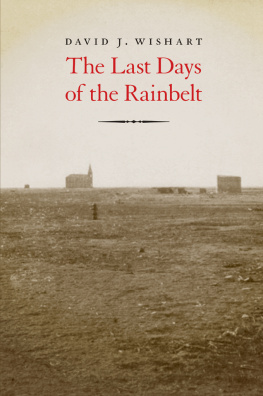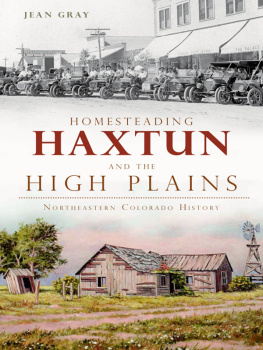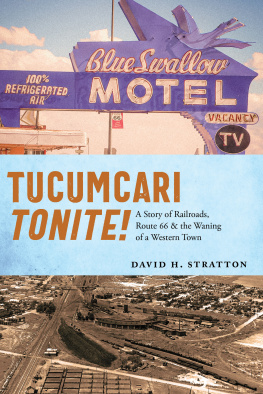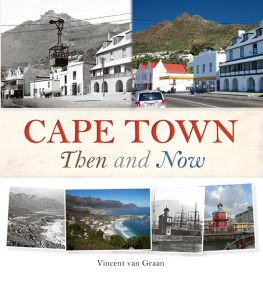

2013 by the Board of Regents of the University of Nebraska
All rights reserved
Manufactured in the United States of America
Funds for the index were provided by the UNL Research Council.
Library of Congress Cataloging-in-Publication Data
Wishart, David J.,1946
The last days of the rainbelt / David J. Wishart.
pages cm.
Summary: A geographical history of eastern Colorado,
western Kansas, and southwestern Nebraska during the 1890s drought Provided by publisher.
Includes bibliographical references and index.
Epub ISBN 978-1-4962-0942-9
Mobi ISBN 978-1-4962-0943-6
1. Great PlainsHistory19th century. 2. DroughtsGreat PlainsHistory19th century. 3. AgricultureGreat PlainsHistory19th century. 4. FarmersGreat PlainsSocial conditions19th century. 5. Human geographyGreat Plains. 6. Social changeGreat PlainsHistory19th century. 7. Great PlainsEnvironmental conditions. 8. Great PlainsEconomic conditions19th century. I. Title.
F 595. W 77 2013
978'.032dc23 2013019313
Set in Granjon by Laura Wellington.
Illustrations

Acknowledgments

I am grateful to the National Endowment for the Humanities for a Fellowship that allowed me to get this project started, and to the University of Nebraska-Lincoln Research Council and School of Natural Resources for small grants that helped me finish it. I also greatly appreciate the assistance given by Molly Boeka Cannon, who fashioned the maps and diagrams from my own rough copies, and Jessica Ditmore, who produced the final manuscript from my barely legible handwritten pages. Joyce Hurst and Milda Vaitkus, associated with the geography program at the University of Nebraska-Lincoln, helped in many ways too. Thanks also to Bridget Barry for acquiring my manuscript for the University of Nebraska Press and to Joeth Zucco for her meticulous editing. Finally, Id like to express my gratitude to the Nebraska State Historical Society, which has been my home base for research since I came to the United States in 1967, and to the Colorado Historical Society where, just burrowing around a long time ago I came across the leather-bound volumes of settlers interviews that made this study possible.
Introduction

A Ruined Land
In 1899, at the end of a decade blighted by severe drought and economic hardship, J. E. Payne, superintendent of the Agricultural Experiment Station at Cheyenne Wells, made a fact-finding tour of the surrounding plains of eastern Colorado. Payne, a recent graduate of Kansas Agricultural College in Manhattan, drove his spring wagon across thirteen hundred dusty miles of Kit Carson County and what was then Arapahoe County, and is now Yuma and Washington Counties. He interviewed settlers, located the few orchards that had survived the drought, noted the small-scale well and ditch irrigation, and assessed agricultural prospects. Everywhere he traveled, he saw the ruins of towns and an emptied-out countryside.
The semiarid shortgrass plains of eastern Colorado and adjacent southwestern Nebraska and western Kansas, which had been used as open range by cattlemen and sheepherders for decades and as hunting grounds by Native Americans for thousands of years, was rapidly and thickly settled by American farmers, speculators, and town builders from 1885 to 1889. This was (and is), at best, marginal farming land, with annual precipitation totaling less than fifteen inches, and in many years much less than that. It is an austere country of flat uplands reaching to distant horizons, with few trees, and streams that run dry for most of the year, a country of climatic extremes, from smothering blizzards to desiccating summers.
But the settlers were not deterred: for decades they had been assured by scholars, railroad companies, agricultural journals, and state immigration boards that rainfall would increase as farmers planted trees, which would still the hot winds and reduce evaporation, while at the same time returning moisture to the atmosphere through transpiration, causing saturation, and more rain. More plausibly, but still to a degree a fantasy, plowing up the dense prairie sod would allow rainfall to penetrate deeply, so avoiding rapid run-off and evaporation. The stored moisture would be available for the settlers crops of wheat and corn and would again be slowly returned to the atmosphere, causing more rain. It was only a matter of time, it was reasoned and widely believed before the semiarid western plains would be fully farmed without any need for irrigation. The fact that this was the only remaining free, or cheap, land on the central Great Plains only made the apocryphal theories more enticing.
In accordance with this theory, in the second half of the 1880s the plains of eastern Colorado and nearby Kansas and southwestern Nebraska became known as the Rainbelt. This was not in the sense of a natural surplus of rain, the way that Cornbelt denotes a surplus of corn, but in the sense of a deficit just waiting to be corrected. The expectation was that rainfall would be increased through the farmers own efforts and the land would yield crops as abundantly as the more humid plains to the east. If we dont have a continuous deluge, the Denver-based agricultural journal Field and Farm gushed in 1886, we will at least have enough rain to get along comfortably.
The settlers trickled into the Rainbelt before the railroads were in place, and flooded in thereafter. The plains of western Kansas and southwestern Nebraska were fully settled by 1886, leaving new arrivals the Rainbelters to push into eastern Colorado during the last three years of the decade. Because the cattlemen, anticipating the land rush and the end of the open range, had already secured the valleys, the homesteaders were left with the vast uplands, and the dream that rainfall would come to them through their own actions.
The settlers hardly had time to get established before drought and economic turmoil descended and, lacking roots and resources, they blew away like tumbleweeds. An entire layer of settlement was peeled off the land. Many counties lost more than one-third of their population from 1890 to 1900; some lost as much as two-thirds. The 1890 U.S. census population density map had shown continuous settlement across the central Great Plains from the Missouri River to the Rocky Mountains; the 1900 census map showed extensive areas of eastern Colorado designated once again as unsettled.
The evidence of abandonment was written on the landscape. Payne recalled that eastern Colorado towns like Lansing, Cope, Arikaree City, Thurman, Linden, and Harrisburg had all aspired to be large cities, county seats, and railroad centers. But without a surrounding farm population to sustain their banks, businesses, and schools, by 1899 they had been reduced to virtual ghost towns. Payne observed that Lansing had only four cellars to mark its site. Idalia had done a little better, retaining two stores, two blacksmith shops, a school house, and a few dwellings. At Friend, only one building, a school, was still standing. Cope had kept a store, a school, and a couple of houses. At Arikaree City, the one surviving building was home to a family of four. All that remained of Linden were a few heaps of earth and a few holes in the ground. There was still a family living at Harrisburg, and also at Thurman, a town that only recently had been the site of two banks and had attracted the interest of two railroads. Payne drove eighteen miles between Cope and Linden, on the divide between the North Fork of the Republican and the Arikaree Rivers, without seeing a single home. Over vast areas, the country was reverting to open range, and the evidence of homesteading was being effaced.
Next page









